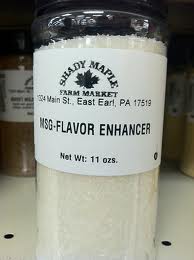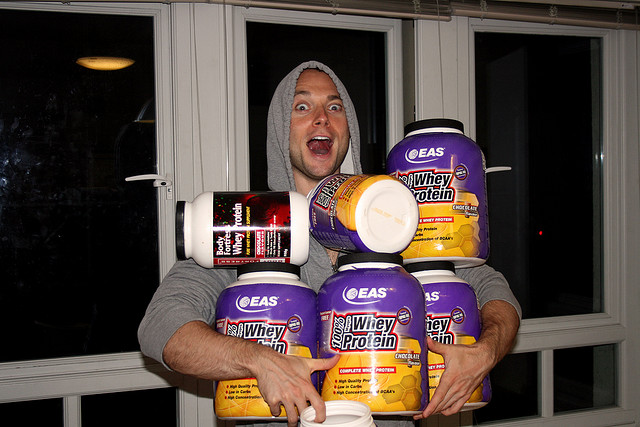What is MSG? It’s in almost everything in a package and its bad.
This page has important information about how you can live the longest, healthiest life (by avoiding MSG). Nevertheless, please do not panic. Everyday and every breath, simply do the best you can to take care of yourself. Do what you can. Recognize our food choices exist in a “marketing environment in which billions of dollars are spent to convince us that nutrition advice is so confusing, and eating healthfully so impossibly difficult, that there is no point in bothering to eat less of one or another food product or category.” (Marion Nestle in her book, Food Politics p.360)
[So… if you notice yourself wanting to check out about the idea of MSG, because the subject feels too overwhelming and too complicated, know that your passivity could be fed by the advertising you’ve witnessed for years. Yes, of course I still eat some of these products, but when I can, I avoid MSG.]
Before you read what I have composed below, please know this website explains MSG very well.
————————————————————————————————————————————————–
What is MSG (monosodium glutamate)?
Watch this one-minute video explanation that answers the question.
“MSG is a drug added to our foods that causes widespread toxicity.” ~George R. Schwartz, M.D
Print out this USEFUL MSG HANDOUT and take it to the grocery store with you. That’s when you’ll start to understand the basic principles for food shopping that I advocate for at the bottom of my page here.
In many Philippine provinces, as in the rest of Asia, it is not uncommon for people to eat dogs, after poisoning them with one or two tablespoons of monosodium glutamate (MSG) placed inside a roll of bread. The dog salivates, loses consciousness and involuntarily spasms until breathing stops. MSG is a drug.
MSG has no flavor of its own and synthetically enhances the taste of food by altering the way the tongue, nervous system and brain communicate with one another. It intensifies the flavor of savory foods by causing neuron cells in the mouth to over-react to different flavors. Unfortunately, these over-stimulated cells exhaust themselves and die, causing microscopic scarring throughout the human system. Within 30 minutes of eating processed foods high in MSG, neurons swell up like balloons and die after three hours. With lower doses, neuron cells die after 18 to 24 hours.(The above paragraph is what is said in the video answering the question, website is here.)
The bottom line is avoid MSG whenever possible.
When the following words appear on the label, the food product contains MSG:
Monopotassium glutamate, hydrolyzed plant protein, yeast extract, autolyzed plant protein, glutamic acid, sodium caseinate, autolyzed yeast, textured protein, gelatin, calcium caseinate. Even some so-called natural or healthy foods contain monosodium glutamate labeled as yeast extract.
Foods that often contain MSG or create MSG during processing will be listed as: natural pork flavoring, bouillon, natural beef flavoring, whey protein concentrate, whey protein, whey protein isolate, maltodextrin, ultra-pasteurized, barley malt, protease, protease enzymes, soy sauce, soy protein, anything protein fortified, natural flavor(s), seasonings.
I recommend printing out this MSG list and taking it to the grocery store with you next time.
TRY AND FIND SOMETHING ON A SHELF IN A GROCERY STORE THAT DOESN’T HAVE ONE OF THE ABOVE INGREDIENTS.
Bottom line: MSG is in almost everything in a package and its bad.
————————————————————————————————————————————————–
If you write or call to ask whether or not there is MSG in a product…
If you want to find out if there is processed free glutamic acid (MSG) in a product, you must ask the manufacturer for information about “free glutamic acid.” Don’t ask about “MSG.” Manufacturers find it convenient, when speaking to consumers, to tell them that there is no “MSG” in their product, meaning that there is no ingredient called “monosodium glutamate.” Even if a manufacturer tells you there is no MSG in a product, there may be autolyzed yeast, hydrolyzed pea protein, carrageenan, sodium caseinate, enzymes, and a whole slew of other ingredients that contain or create processed free glutamic acid (MSG) during manufacture.
If you are told that all of the MSG in a product is “naturally occurring,” thank the manufacturer for that meaningless information, but explain that all processed free glutamic acid (MSG) is referred to as “natural” by the FDA — so “natural” tells you nothing. In fact, as the word “natural” is defined by the FDA, the food ingredient “monosodium glutamate” is “natural.”
Questions? Contact me at
[email protected]
Remember, I want to help you live the healthiest life possible! –GreenLightHeidi
————————————————————————————————————————-
Food label reading requires diligence. The following products demonstrate how there can be the words “NO MSG” on a label and the food STILL has it. Notice how “natural” and even “organic” products still have MSG. (Remember that the USDA ORGANIC label is a good label and useful, as opposed to the word “natural” which means nothing.)
KcKay’s Chicken Style Instant Broth and Seasoning
“NO MSG ADDED”
Autolyzed Yeast
(In addition, they use disodium inosinate and disodium guanylate — expensive flavor potentiaters that work synergistically with processed free glutamic acid (MSG) — and, we are told, are only cost effective when used with processed free glutamic acid (MSG))
Spice Bouquet Adobo seasoning
“No additives or MSG”
Hydrolized Vegetable Protein
Lightlife Foods Smart Ground
“No MSG”
Soy Protein Concentrate, Soy Sauce, Natural Flavors, Malt Extract, Wheat Starch
Lightlife Foods Tofu Pups
“NO MSG”
Soy Protein Isolate, Yeast Extract, Carrageenan, Natural Smoke Flavor
Campbell’s Healthy Request Cream of Mushroom
“No MSG”
Modified Food Starch, Whey Protein Concentrate, Maltodextrin, Flavoring
(In addition, Campbell’s used disodium inosinate and disodium guanylate — expensive flavor potentiaters that work synergistically with processed free glutamic acid (MSG) — and, we are told, are only cost effective when used with processed free glutamic acid (MSG))
Lawry’s Tenderizing Beef Marinade Spices & Seasonings
“No MSG Added”
Modified Food Starch, Natural Flavoring
Simply Organic Macaroni & Cheese
“Our products DO NOT contain MSG, hydrolyzed vegetable protein…”
Natural Flavors, Organic Autolyzed yeast extract
Geno’s All-In-One Sauce
“No MSG”
Soy sauce, Worcestershire sauce (…hydrolyzed corn and soy protein…), Natural flavoring, Modified food starch
Cardini’s Herb Poppy Seed Dressing (Low Fat)
“NO MSG ADDED”
Maltodextrin, Modified Food Starch, Whey Protein Concentrate, Natural Flavor
Simply Organic spicy chili
“Our products do not contain MSG…”
Organic Autolyzed Yeast Extract
Modern Products All Natural Vege-Sal All Purpose Vegetized Seasoning Salt
“NO MSG ADDED”
Soy Sauce, Hydrolized Vegetable Protein
Hain Pure Foods All Natural Chicken Broth
“No Added MSG”
Chicken Broth, Chicken Base, Autolyzed Yeast Extract
Campbell’s Healthy Request Minestrone
“Contains No MSG”
Contains: Chicken stock, high fructose corn syrup, chicken flavor, Disodium inosinate, Disodium guanylate, Flavoring
(Disodium inosinate, Disodium guanylate are expensive additives that work synergistically with processed free glutamic acid (MSG). It would not be cost effective to use them if there were no processed free glutamic acid (MSG) in the product.)
Blue Diamond Almond Toppers
“No MSG”
Nonfat milk solids, Cheese cultures, Enzymes, Maltodextrin, Enzyme modified parmesan cheese, Torula yeast, Natural flavor, Disodium inosinate, Disodium guanylate
(above section from here)
————————————————————————————————————————————————-
Question: Does the following whey protein (showing one particular brand) contain MSG?
Whey protein, whey protein isolate, and whey protein concentrate all contain MSG.
*Picture courtesy of Kurt Thomas Hunt
FINAL LESSON: Practice food label reading. BECOME AN INFORMED CONSUMER.
HERE IS ONE WAY TO TEST FOR FOOD ALLERGIES particularly to MSG:
(Only do this if you are used to processed foods, which most of us are…)
On an empty stomach, drink one cup of warm water with a bouillon cube dissolved in it, then wait thirty minutes to a few hours and see how you feel. This will show you how you respond to MSG. Some people are more sensitive than others. I find that my main symptom is that I start craving more food. It is my experience that we often crave the very thing that we are allergic to.
A good way to test for food allergies, (or your response to food additives,) is to eat NOTHING but ONE FOOD for the day. You will likely know your body’s relationship to the food that you are testing within four hours after you woke up.
You can try testing for peanut, corn, soy, and dairy allergies (VERY COMMON ALLERGIES) by doing this same simple test. Just eat one product: peanut butter or corn chips or soy milk or one dairy product like cottage cheese, for all of the day/until you’ve determined that your body has an allergy. Pay attention to how you feel. This will show you how your body likes or doesn’t like these common allergy foods. Many illnesses and symptoms are linked to food allergies, so you could inadvertently relieve yourself of headaches, diarrhea, indigestion, fatigue, and more by trying this simple, home, food allergy test. (And after the test results, by cutting out the food product that your body disliked. This is easier said than done. It took me almost five years to completely cut diary out of my diet.)
I like the slogan in the truth is labeling website (http://www.truthinlabeling.org/nomsg.html)
“IF MSG ISN’T HARMFUL, WHY IS IT HIDDEN?”



Comments